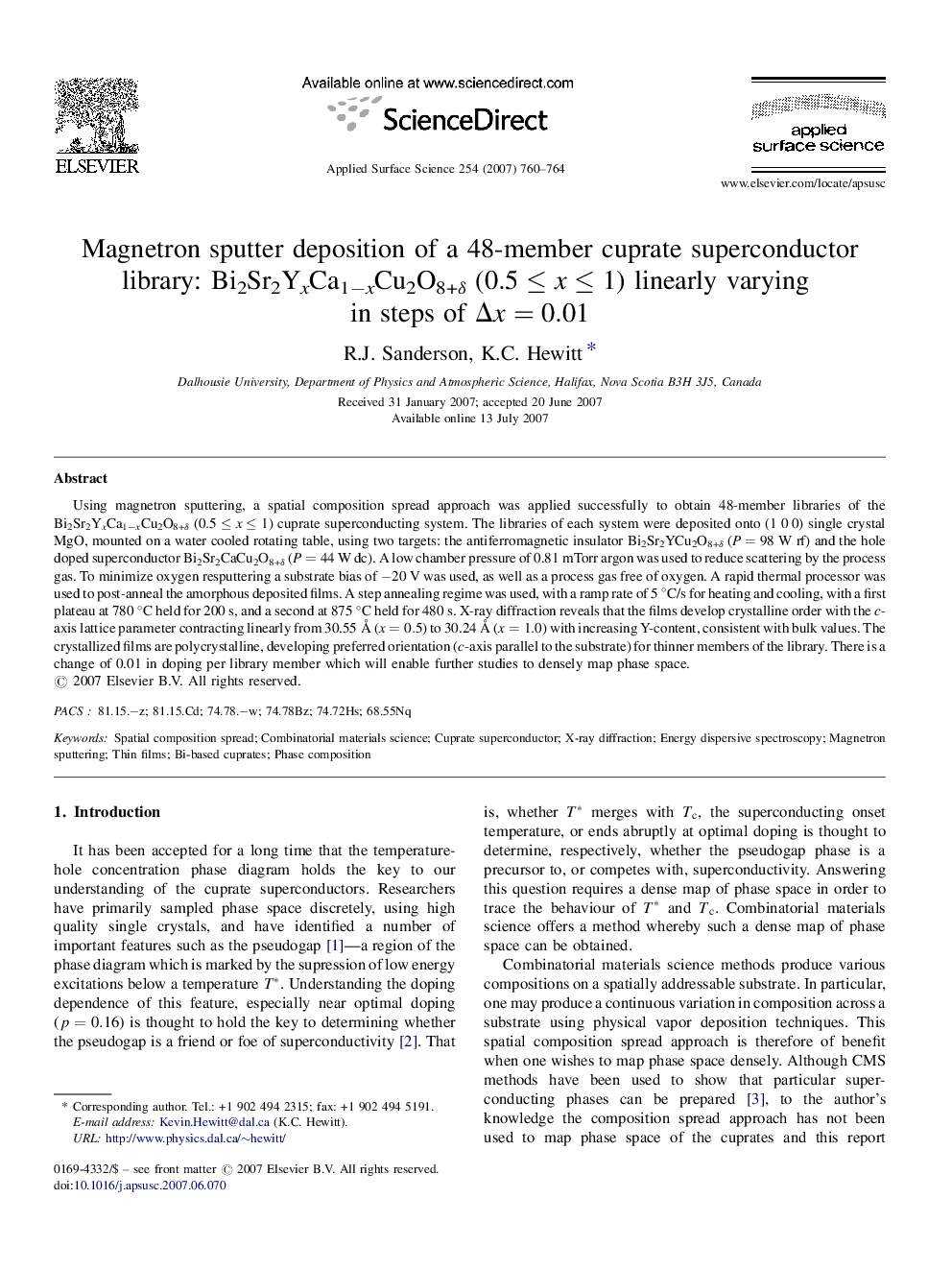| Article ID | Journal | Published Year | Pages | File Type |
|---|---|---|---|---|
| 5365605 | Applied Surface Science | 2007 | 5 Pages |
Using magnetron sputtering, a spatial composition spread approach was applied successfully to obtain 48-member libraries of the Bi2Sr2YxCa1âxCu2O8+δ (0.5â¤xâ¤1) cuprate superconducting system. The libraries of each system were deposited onto (1 0 0) single crystal MgO, mounted on a water cooled rotating table, using two targets: the antiferromagnetic insulator Bi2Sr2YCu2O8+δ (P=98 W rf) and the hole doped superconductor Bi2Sr2CaCu2O8+δ (P=44 W dc). A low chamber pressure of 0.81 mTorr argon was used to reduce scattering by the process gas. To minimize oxygen resputtering a substrate bias of â20 V was used, as well as a process gas free of oxygen. A rapid thermal processor was used to post-anneal the amorphous deposited films. A step annealing regime was used, with a ramp rate of 5 °C/s for heating and cooling, with a first plateau at 780 °C held for 200 s, and a second at 875 °C held for 480 s. X-ray diffraction reveals that the films develop crystalline order with the c-axis lattice parameter contracting linearly from 30.55 à (x=0.5) to 30.24 à (x=1.0) with increasing Y-content, consistent with bulk values. The crystallized films are polycrystalline, developing preferred orientation (c-axis parallel to the substrate) for thinner members of the library. There is a change of 0.01 in doping per library member which will enable further studies to densely map phase space.
